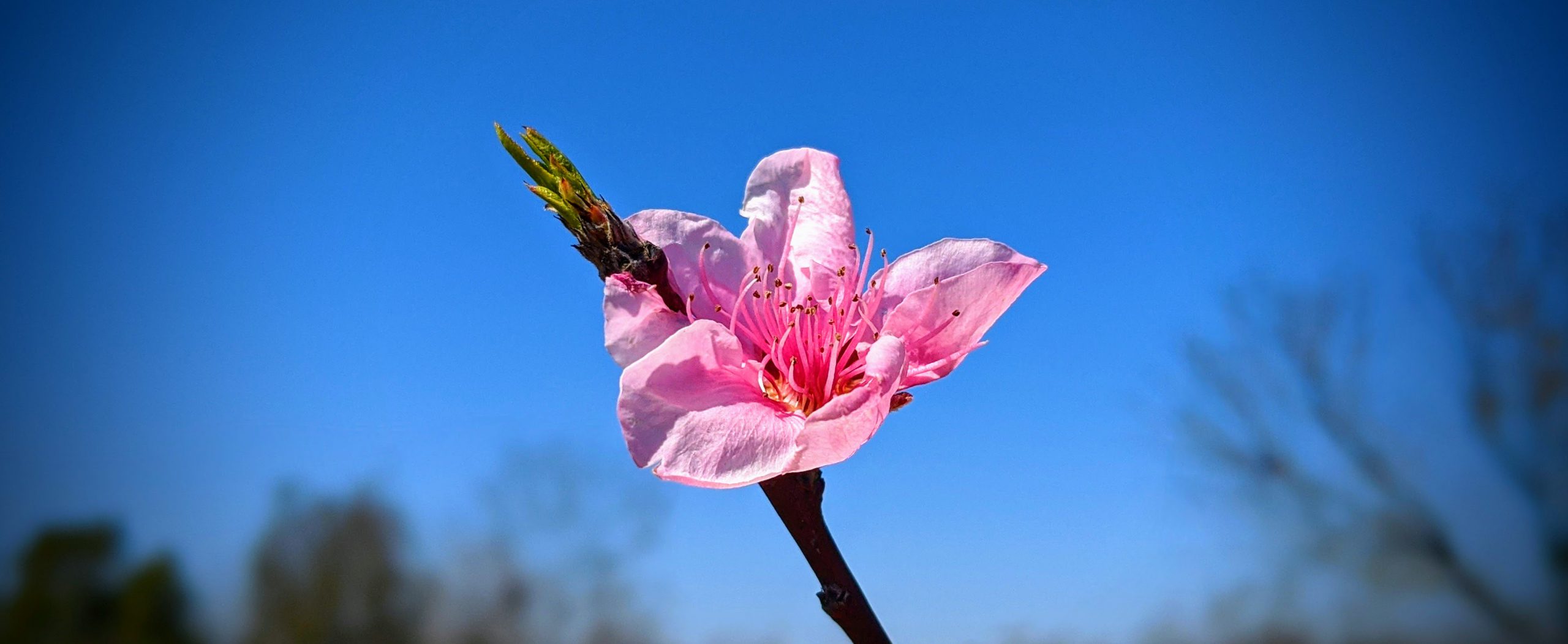The trees are dormant and barren of leaves, but there is so much work that needs to be done.
It probably comes as a bit of a surprise to learn that the winter months leading up to spring are a furious storm of activity. Planting, pruning, weeding, mulching, spraying, and fertilizing all come crashing down on top of us as we prepare for the orchard to come into bloom.
Planting
Even if we weren’t planting a new block of trees in the orchard we would still need to plant new trees each year. For one reason or another some trees simply don’t grow as well as their neighbors. If I’m honest, we often don’t know exactly why a single tree is performing poorly. Regardless, the fix is usually the same. Plant a new one!

It would be a different story if all the trees in the same area weren’t doing well, but where there is one poorly tree among several hundred it usually just means we got a dud.

Pruning
Each year we remove as much as 50-60% of a tree’s growth from the previous year. It may sound like a lot (and it is!) but pruning a peach tree is vital to it’s health and productivity. Even with high powered electric pruning sheers, the process of pruning a single tree takes at least 20 minutes. With over 750 semi mature peach trees in the orchard, that 20 minutes per tree adds up quickly. That’s 3 trees per hour, or 24 trees per full 8 hour work day. Needless to say, it takes a while.
The new trees that we just planted need to be pruned as well. The baby peach trees are significantly easier to prune, but they have specific needs of their own to get off to a good start.

Weeding
Weeds and grass can stunt the first year growth of a baby peach tree by as much as 90%. While more mature peach trees stand a better fighting chance, the weeds never fail to get a head start on the year. By the time the first tiny green leaves of the year start poking out from the branches, the weeds and grasses are already pushing 6-12 inches in height.

Be careful with weed killer near peach trees! Roundup will kill or seriously stunt a peach tree. I cant stress enough how much you need to protect your trees from herbicides. If you don’t you’ll be pulling up dead peach trees instead of weeds.

Mulching

Mulch provides a number of benefits to an orchard with the biggest being that it helps or organically combat the weeds referenced above. Mulch also serves to reduce the irrigation needs of the trees in the heat of summer and it breaks down over time into rich organic fertilizer. Because mulch is constantly decaying, it has to be reapplied every year.
Spraying
Growing a commercial crop of peaches requires the use of fungicides and pesticides to protect the delicate fruit as it’s growing on the trees. Winter however is an opportunity to combat some of those issues with a more environmentally friendly application of a dormant oil spray. Instead of killing pests chemically, dormant oil simply smothers overwintering insects and their eggs so that they don’t pop out first thing in the spring and immediately start munching on our trees. While dormant oil wont replace the need for spring and summer sprays, it is considered a vital piece of the puzzle and gives the orchard the best start as it wakes up from winter.
Spraying an orchard is a bigger job than spraying your trees at home, so it requires bigger equipment. Instead of that 1 gallon pump sprayer you’re used to, we use a 200 gallon tractor mounted sprayer that has a massive fan mounted to it to pushes the spray into the canopy of leaves.
Fertilizing
Fertilizer is relatively cheap and it is effective at producing a vigorous and healthy tree. The timing is a bit tricky here, but we try to apply our first application of fertilizer just as the trees start putting on new leaves. Applying fertilizer too early means the weeds will soak up all that fertilizer goodness. Too late and you’ll miss getting the trees off to a firecracker start to the year.

A soil test will tell you exactly what your soil is missing for your trees to perform their best. It honestly should have been the first thing you did before you planted a single tree, but there’s no time like the present!
Spring is right around the corner
Ready or not, the trees are coming into bloom as they wake up from their winter slumber. Spring brings a whole host of difficulties all its’ own that must be overcome. Unfortunately as much as we would like them to, good peaches just don’t grow themselves. All that said, unless we have a late frost or a hailstorm, we should have a crop of peaches this year. We’re looking forward to it!



Leave a Comment